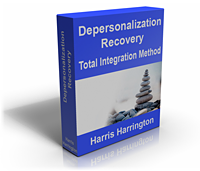Mindfulness Meditation and Depersonalization Disorder
Mindfulness meditation can be helpful in overcoming depersonalization and derealization disorder. Is it THE most important technique to implement? Not really, but it is an important tool.
One of the pitfalls of mindfulness meditation is that it can be rather ideologically loaded with many eastern concepts that people with DPDR can find quite disturbing. These concepts include “no self” (anatta) and “emptiness” (sunyata). I had a religious studies professor in college that said “buddhists do actually have a god, it’s the concept of emptiness”. Take that for whatever you make it, but buddhist meditation comes with a lot of religious baggage.
The best type of meditation for DPD sufferers is a very mundane form of mindfulness that helps you get grounded in your body, and helps you feel more connected with your surroundings.
Usually this involves having something to orient your visual focus. You could be sitting in a chair, laying down, or perhaps even walking. Once you do this, you allow yourself to become non-judgmental towards your thoughts that arise and fall. It is very common for people when they start doing meditation that they will have many thoughts arise. That’s good. Your mind generates lots of thoughts.
I recommend doing this kind of meditation for 10-30 minutes a day. No more is really necessary. Another pitfall of meditation is that it can veer into self-focused rumination. That’s not a good thing. Practice short meditation sessions every day for a few weeks, and if you don’t find it helpful, then you can just discontinue them and perhaps come back to them later.
When it comes to “here and now” techniques (as opposed to the man childhood issues I deal with) distraction may actually be more important than mindfulness meditation in helping you address the way you feel.
